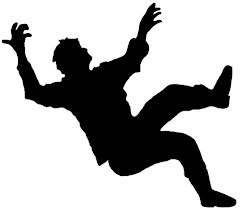Hip fractures suffered by seniors and older adults (age 65+) is a very serious injury and the post-accident complications can be life-threatening. The elderly are at the highest risk level (particularly ages 80+) for fracturing of the hip because bone structure tends to weaken with age. The medical community identifies weakening of the bone as “osteoporosis”.
Multiple use of medications, poor vision and/or balance instability are the main causes for older adults to trip or fall. Falling is one of the most common causes of hip fracture and often result in long term functional impairment, nursing care and increased mortality.
A hip fracture usually requires treatment including surgical repair or replacement and hospitalization and is normally followed by admission to a nursing home or rehabilitation center. Statistics show that up to one in four adults who lived an independent lifestyle before the hip fracture remain in a nursing home or similar rehabilitation treatment facility for up to one year after the accident. Although in some individual cases, it may be only a few months of physical therapy treatment.
Statistics
- Over 90% of hip fractures are caused by falls; most often falling sideways onto the hip.
- Since 2000, the annual number of reported hip fractures by older adults has remained constant
- in 2007, 281,000 hospital admissions among older adults (age 65+) for hip fracture accidents
- Medicare costs for hip fractures exceeded 3 billion dollars in 1991 (22 years ago)
Symptoms
- Severe sharp pain in the hip or groin
- Inability to place weight on the leg on the side of the injured hip
- Inability to move immediately after a fall accident
- Stiffness followed by bruising and swelling in and around the injured hip area
- Leg on the side of the injured hip turns outward
Risk Factors
One or more factors may increase the risk of a hip fracture, such as:
- Gender: Females lose bone density at a faster rate than males. Accelerated bone loss is caused by the decrease in estrogen levels that occurs during menopause.
- Age: As older adults age in place, the rate of hip fracture accidents dramatically increases due to bone density and muscle mass loss.
- Medical conditions: Older age brings about vision and balance problems; slower reaction time to avoid a fall when unsteady
- Chronic medical conditions: Osteoporosis (see above) is the primary risk factor for hip fracture; overactive thyroid and intestinal disorders also lead to bone density loss
- Medications: Certain drugs or a combination of drugs can lead to dizziness to then fall; cortisone taken long term can weaken bone structures
- Nutrition: Lack of calcium and vitamin D in a diet particularly at an earlier stage in life lowers body’s peak bone mass; eating disorders can damage the skeleton
- Exercise: Lack of a regular weight-bearing exercise regimen (i.e. walking, stretching, aquatic) will weaken bones and muscles making falls more likely
Complications
Older adults may develop one or more of the following complications in the event a hip fracture keeps oneself immobile or for a long period of time:
- Blood clots in the legs or lungs
- Urinary tract infection
- Pneumonia
- Bedsores
Like falling and recurring falls, seniors and older adults who have experienced a first-time hip fracture accident, their risk for suffering another fracture increases significantly. As a result, physicians, health care providers and physical therapists who treat these at-risk elderly patients, usually prescribe or recommend the use of a personal medical alert system and 24/7 emergency monitoring service for the home. In Part 2 of this Hip Fracture blog series, we will explore medical treatment and other effective interventions to aid in the recovery of hip fracture injuries.










 “I am very uneasy and have had many falls after my surgery. Ordering the First Response system was easy and I even set it up myself. I have had to use my alert button a few times so far. My daughter has even been contacted after I had taken a few falls. My First Response system has worked great each time I’ve needed it!”
“I am very uneasy and have had many falls after my surgery. Ordering the First Response system was easy and I even set it up myself. I have had to use my alert button a few times so far. My daughter has even been contacted after I had taken a few falls. My First Response system has worked great each time I’ve needed it!”